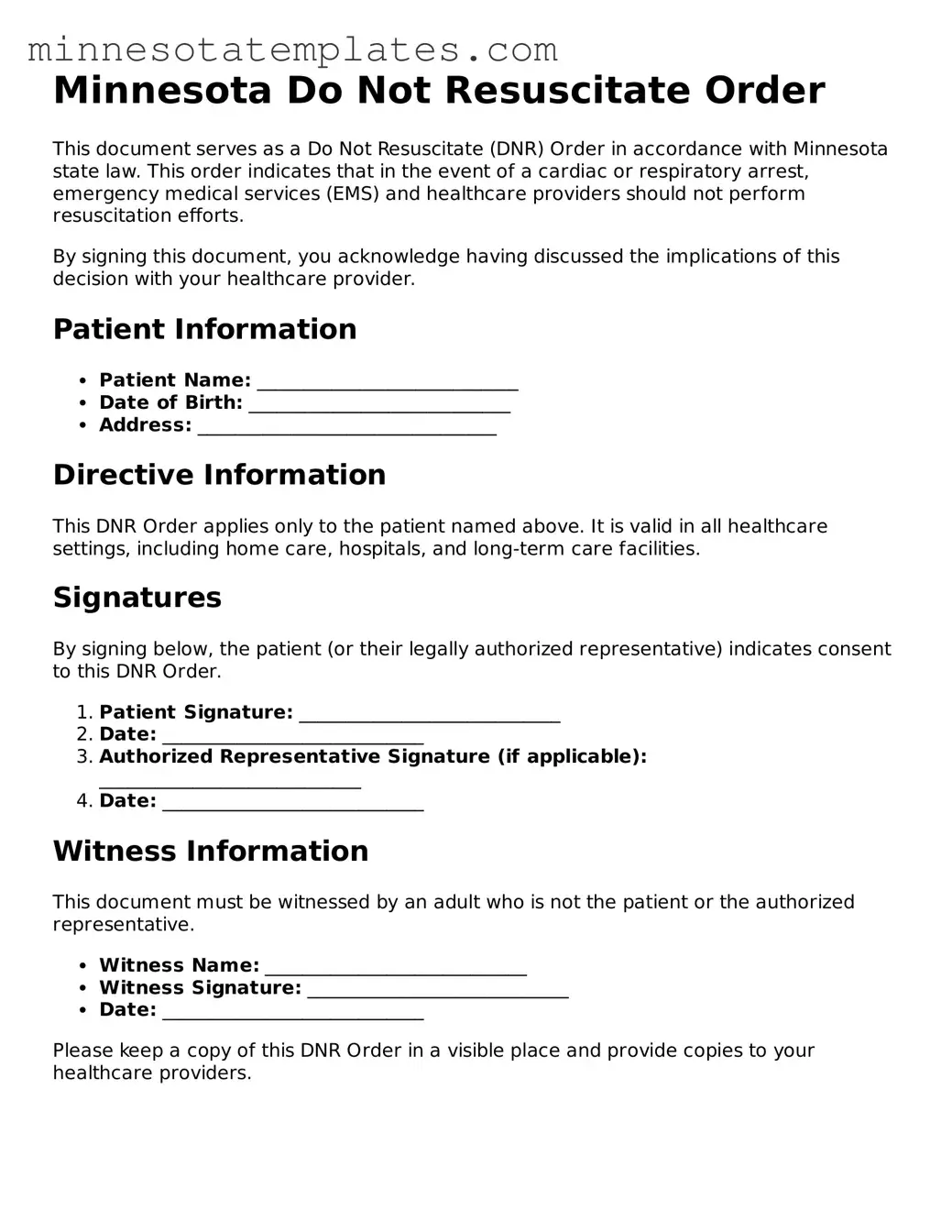In the realm of healthcare decision-making, the Minnesota Do Not Resuscitate (DNR) Order form plays a crucial role in ensuring that individuals' wishes regarding end-of-life care are respected. This legal document allows patients to communicate their preferences about resuscitation efforts in the event of a cardiac arrest or respiratory failure. It is essential for individuals, especially those with serious medical conditions, to understand how this form functions and the implications it carries. The Minnesota DNR Order form must be completed and signed by both the patient and a licensed physician, affirming that the patient is fully informed about their medical condition and the consequences of their decision. Importantly, this form is not a one-size-fits-all solution; it is tailored to reflect the unique values and desires of each individual. The form also includes specific instructions for healthcare providers, ensuring that the patient’s wishes are honored in emergency situations. Furthermore, it is vital to recognize that the DNR Order is part of a broader conversation about advance care planning, encompassing other documents such as living wills and healthcare proxies, which together create a comprehensive framework for end-of-life care. Understanding the nuances of the Minnesota DNR Order form empowers individuals to make informed choices that align with their personal beliefs and circumstances.
